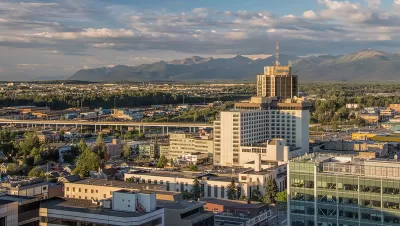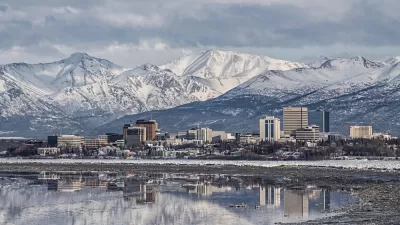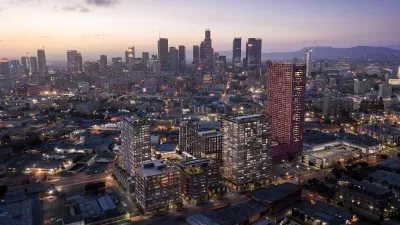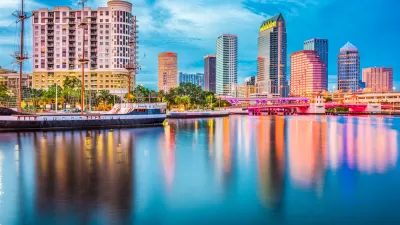Downtown Anchorage has languished for decades from the lack of redevelopment. Mayor Ethan Berkowitz seeks to reinvigorate the downtown core with new housing and other development opportunities. Most of the new growth has gone to Midtown area.

Alaska Dispatch News reporter Devin Kelly writes about the myriad challenges of developing in Alaska's largest city, citing higher than average construction costs and a shorter construction season, among other reasons. In addition, state highways running through the heart of downtown and along its eastern edge creating a less than desirable urban atmosphere for pedestrians, bicyclists, and thousands of tourists who visit during the summer season.
Mayor Ethan Berkowitz took office in July 2015 and campaigned on an platform to revitalize downtown. Since that time city officials and private stakeholders have embraced the goal of bringing housing to downtown Anchorage as well as improving urban amenities. Working with Smart Growth America (SGA), a national non-profit based in Washington, D.C., the Berkowitz administration has crafted a strategy to start with "a few really good blocks."
"One rule of thumb is to achieve a minimum 2- to 4-block sequence that is continuously engaging people walking along the sidewalk," wrote Smart Growth America consultants Chris Zimmerman and Alex Hutchinson in the report produced last year.
"Like the Ballard neighborhood of Seattle or the East Village in New York City, the consultants suggested homing in on a small target area that now has parking lots. Anchorage could start with its own land to gauge developer interest," explains Kelly. "The city, under that theory, would have more control over its own land."
FULL STORY: How Anchorage is trying to kickstart construction on empty land downtown

Alabama: Trump Terminates Settlements for Black Communities Harmed By Raw Sewage
Trump deemed the landmark civil rights agreement “illegal DEI and environmental justice policy.”

Planetizen Federal Action Tracker
A weekly monitor of how Trump’s orders and actions are impacting planners and planning in America.

The 120 Year Old Tiny Home Villages That Sheltered San Francisco’s Earthquake Refugees
More than a century ago, San Francisco mobilized to house thousands of residents displaced by the 1906 earthquake. Could their strategy offer a model for the present?

LA’s Tree Emergency Goes Beyond Vandalism
After a vandal destroyed dozens of downtown LA trees, Mayor Karen Bass vowed to replace them. Days later, she slashed the city’s tree budget.

Sacramento Leads Nation With Bus-Mounted Bike Lane Enforcement Cameras
The city is the first to use its bus-mounted traffic enforcement system to cite drivers who park or drive in bike lanes.

Seattle Voters Approve Social Housing Referendum
Voters approved a corporate tax to fund the city’s housing authority despite an opposition campaign funded by Amazon and Microsoft.
Urban Design for Planners 1: Software Tools
This six-course series explores essential urban design concepts using open source software and equips planners with the tools they need to participate fully in the urban design process.
Planning for Universal Design
Learn the tools for implementing Universal Design in planning regulations.
Ada County Highway District
Clanton & Associates, Inc.
Jessamine County Fiscal Court
Institute for Housing and Urban Development Studies (IHS)
City of Grandview
Harvard GSD Executive Education
Toledo-Lucas County Plan Commissions
Salt Lake City
NYU Wagner Graduate School of Public Service





























